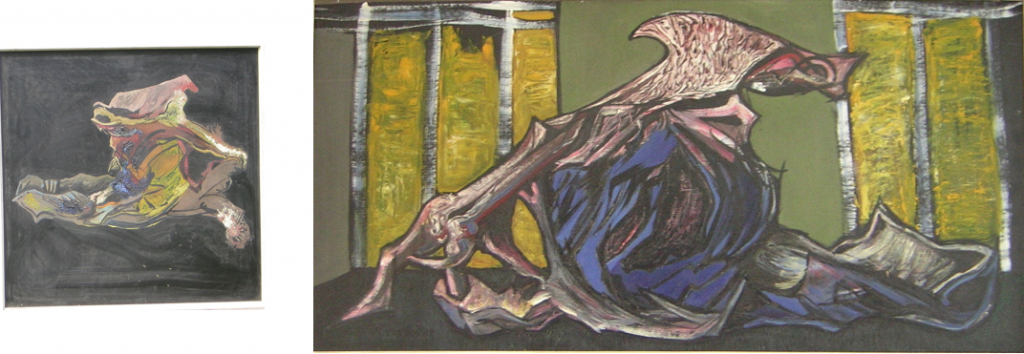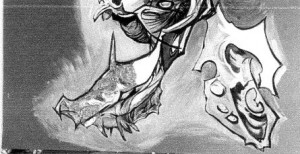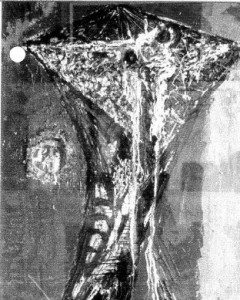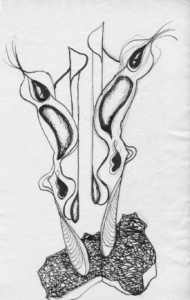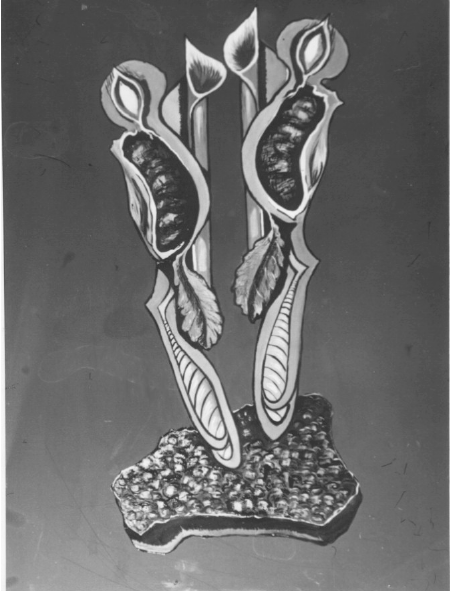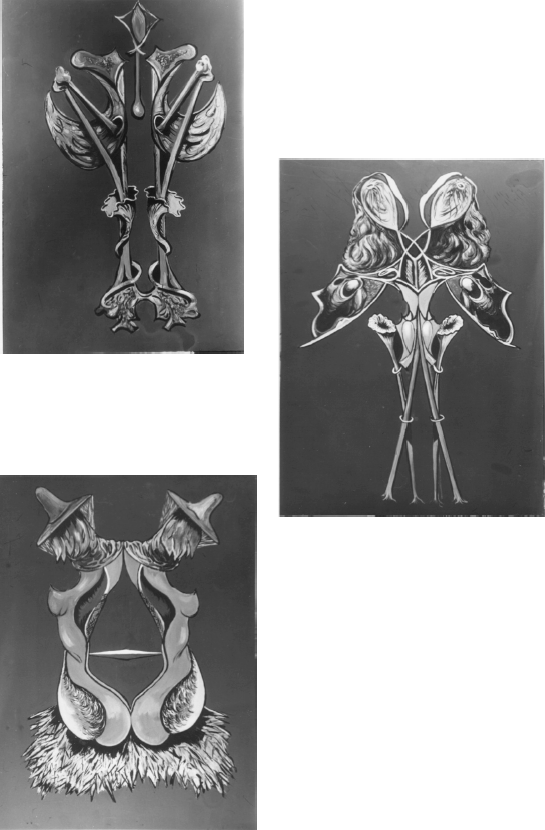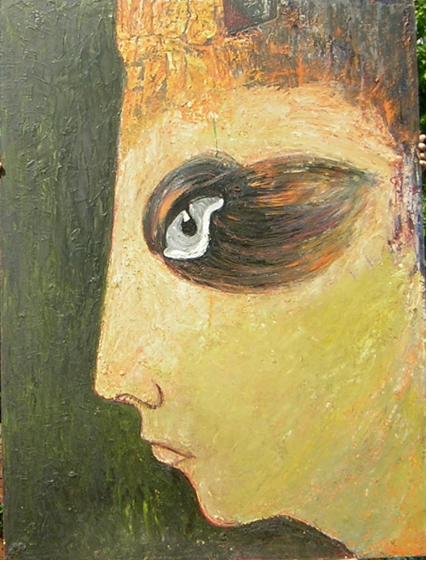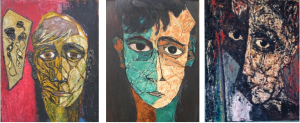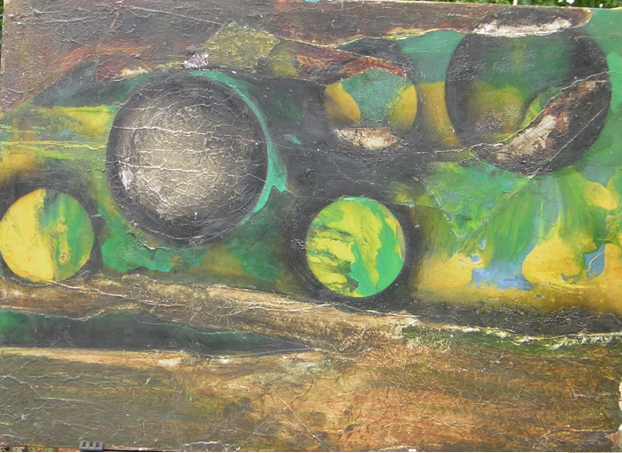She came to London in 1955 and immediataly turned towards abstract painting, her sense of the feel of paint and impasto later becoming a preoccupation with texture which in turn developed into high relief.
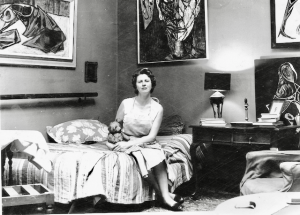 In her first studio at 3 Nottingham St.
In her first studio at 3 Nottingham St.
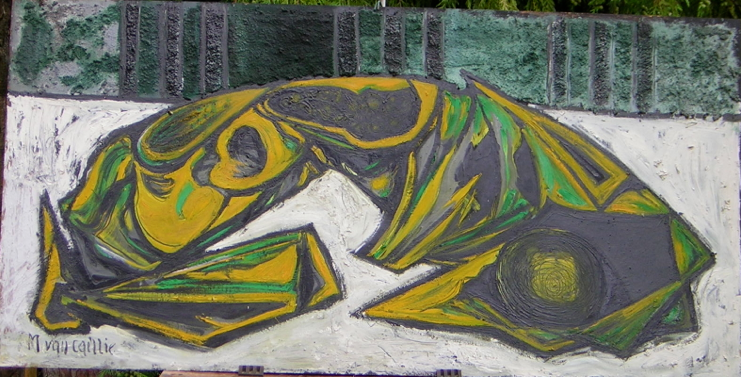
‘Crumpled form’ Oil and impasto on h/board. 122×61 cms (4×2′).
“I think of my pictures as victims” “There is always a part of myself in any picture”
Kitchen Sink
Marcelle was not impressed by the The Kitchen Sink School, referring to a group of painters ( Bratby, Derrick Greaves, Edward Middleditch and Jack Smith ) popular at that time, in mid-‘50s, who focused their work deliberately on the unglamorous — everyday objects and scenes often on industrial and working-class themes, or at least drab and unheroic scenes of post-war austerity, commonplace subjects, derived from ‘Social Realism’.
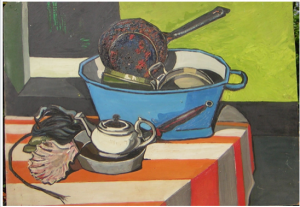 A kitchen sink. 1954. 48 x36″, Oil on H/bd
A kitchen sink. 1954. 48 x36″, Oil on H/bd
Marcelle’s derisive take on the genre illustrates her virtuosity and was considerably superior to what was being produced at the time.
It has been remarked that this picture also represents ‘Migration’, so relevant now in 2019. The iron has the plug removed for moving to another country. The utensils are being sorted and washed before packing. She was herself moving from Belgium to England at that time. This theme was used In a performance work, ![]()
‘The MOON-CHILD SERIES
The extraordinary ‘Moon-child’ series was one of the first on her arrival in London. 1954/5. Each was done on 36 x 48″ hardboard with a matt black background.
THE BIG HEAD SERIES
Subsequently ‘Big Heads’ have become popular with a number of artists.
All on 3 x 4′ (36″ x 48″) H/Bd
Early abstracts.
Her painting soon became purely abstract
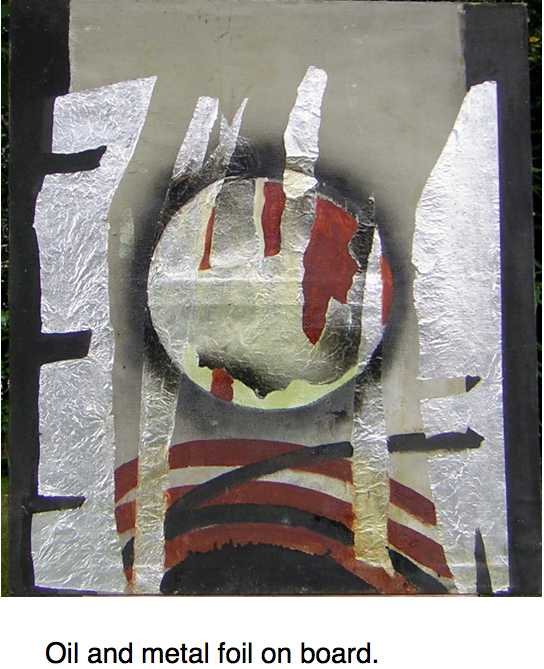
Souros Melikian remarked that this was one of the most remarkable and original pictures that he had ever seen.
It was not long before the conventional canvas orientated form was abandoned, and Marcelle developed her distinctive and unique images, her ‘slashed’ reliefs and ‘shields’, where the movement of the pictorial form was made to traverse the ‘picture plane’, outward as relief, and inward as holes and rents receding back from the surface.

